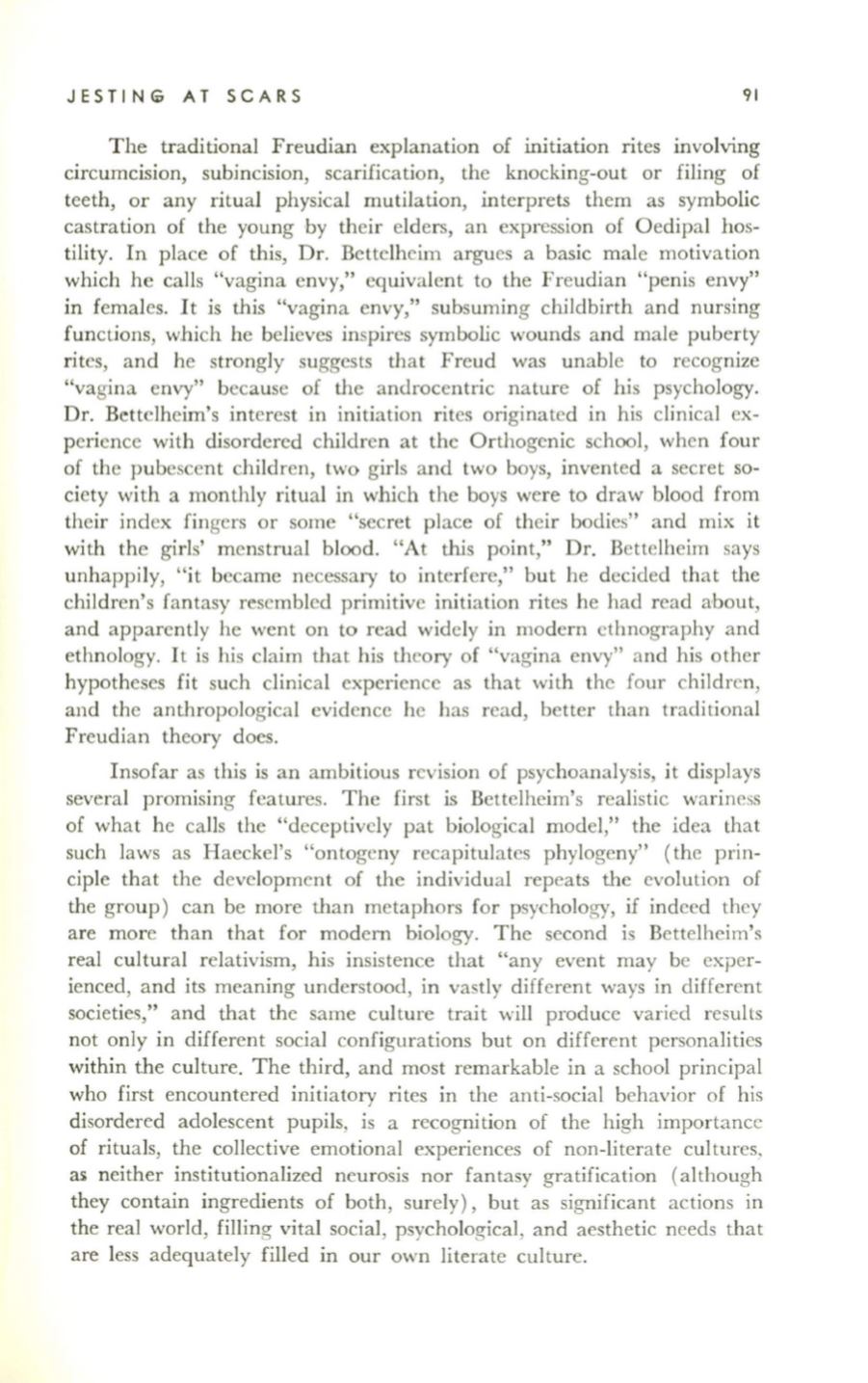
JESTING AT SCARS
91
The traditional Freudian explanation of initiation rites involving
circumcision, subincision, scarification, the knocking-out or filing of
teeth, or any ritual physical mutilation, interprets them as symbolic
castration of the young by their elders, an expression of Oedipal hos–
tility. In place of this, Dr. Bettelheim argues a basic male motivation
which he calls "vagina envy," equivalent to the Freudian "penis envy"
in females. It is this "vagina envy," subsuming childbirth and nursing
functions, which he believes inspires symbolic wounds and male puberty
rites, and he strongly suggests that Freud was unable to recognize
"vagina envy" because of the androcentric nature of his psychology.
Dr. Bettelheim's interest in initiation rites originated in his clinica l ex–
perience with disordered children at the Orthogenic school, when four
of the pubescent children, two girls and two boys, invented a secret so–
ciety with a monthly ritual in which the boys were to draw blood from
their index fingers or some "secret place of their bodies" and mix it
with the girls' menstrual blood. "At this point," Dr. Bettelheim says
unhappily, "it became necessary to interfere," but he decided that the
children's fantasy resembled primitive initiation rites he had read about,
and apparently he went on to read widely in modern ethnography and
ethnology. It is his claim that his theory of "vagina envy" and his other
hypotheses fit such clinical experience as that with the four children,
and the anthropological evidence he has read, better than traditional
Freudian theory does.
Insofar as this is an ambitious revision of psychoanalysis, it displays
several promising features. The first is Bettelheim's realistic wariness
of what he calls the "deceptively pat biological model," the idea that
such laws as Haeckel's "ontogeny recapitulates phylogeny" (the prin–
ciple that the development of the individual repeats the evolution of
the group) can be more than metaphors for psychology, if indeed they
are more than that for modern biology. The second is Bettelheim's
real cultural relativism, his insistence that "any event may be exper–
ienced, and its meaning understood, in vastly different ways in different
societies," and that the same culture trait will produce varied results
not only in different social configurations but on differen t personalities
within the culture. The third, and most remarkable in a school principal
who first encountered initiatory rites in the anti-social behavior of his
disordered adolescent pupils, is a recognition of the high importance
of rituals, the collective emotional experiences of non-literate cultures,
ali neither institutionalized neurosis nor fantasy gratification (although
they contain ingredients of both, surely), but as significant actions in
the real world, filling vital social, psychological, and aesthetic needs that
are less adequately filled in our own literate culture.


